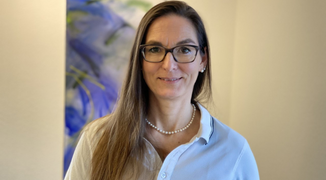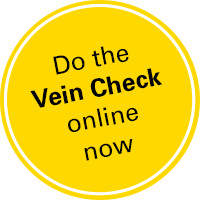Gentle and aesthetic - Dr. Kolloczek-Van Loocke on ELVeS Radial Laser Therapy
 For 4 years, the surgeon and vein specialist Dr. Simone Kolloczek-Van Loocke has been working in the renowned Venacare centers in German-speaking Switzerland. The centers in Zurich and Wädenswil cover a wide range of modern varicose vein diagnostics and therapy. Dr. Kolloczek-Van Loocke offers her patients, among other things, the possibility to have their varicose veins treated with the gentle ELVeS Radial Laser Therapy.
For 4 years, the surgeon and vein specialist Dr. Simone Kolloczek-Van Loocke has been working in the renowned Venacare centers in German-speaking Switzerland. The centers in Zurich and Wädenswil cover a wide range of modern varicose vein diagnostics and therapy. Dr. Kolloczek-Van Loocke offers her patients, among other things, the possibility to have their varicose veins treated with the gentle ELVeS Radial Laser Therapy.
1. Dr. Kolloczek-Van Loocke, Venacare offers state-of-the-art diagnostic methods for venous insufficiency/varicose veins. What methods are available to you and how do they work?
First of all, after a consultation about the symptoms and their severity, the legs are inspected and palpated to check the stage of the venous disease and whether there are already indications or manifestations of chronic venous insufficiency. These include oedema (water retention in the tissue), medically relevant hyper-pigmentation (darkening of the skin), dermatoliposclerosis (inflammatory changes in the skin and subcutaneous fatty tissue).
We also perform color-coded duplex sonography of the veins. This is a modern form of ultrasound examination. For this purpose, the patient is placed on a special tilting couch. In addition to measuring the vein diameters and inspecting the vein walls, the flow of blood is then visualized and a competence test/tightness test of the venous valves is performed using a valsalva maneuver (breathing exercise to build up pressure in the abdominal cavity) and manual compression. Thus, venous insufficiency of the more superficial or deeper veins can be determined.
2. Do you treat other venous diseases besides varicose veins? If so, which ones?
In addition to affected truncal veins, we also treat their side branches, as well as diseased perforating veins (connecting channels between the deep and superficial venous systems) and varicose vein recurrences (varicose veins that have reappeared after an operation). We also treat acute thromboses. Patients are then referred to our practice on an emergency basis for diagnosis.
We also regularly perform the therapy of cosmetically disturbing spider veins. However, this microsclerotherapy (fine sclerotherapy) of spider veins is not covered by health insurance and must be paid for privately.
3. You have a finding that requires treatment after diagnosis. Which method would now be the standard procedure for treating varicose veins?
With the variety of treatment options available today, there is virtually no standard procedure for treatment, but rather a customized therapy that is tailored to the individual needs of the patient. The various procedures are used for this purpose. It depends entirely on whether it is a trunk, side branch or perforator insufficiency, whether the veins are superficial or deep in the tissue.
For truncal vein insufficiency, surgical removal of the vein, known as stripping, is still an option. However, this procedure is increasingly taking a back seat in Switzerland, as gentler methods such as endovenous thermal ablation or adhesion methods are now available. Studies show that minimally invasive procedures are on a par with classic surgery in terms of results and recurrence rates.
These minimally invasive procedures, especially laser treatment, can also be used for straight and/or short-stretch recurrences. For superficial veins or side branch varicose veins, we use miniphlebectomy (the so-called hook method, i.e. pulling out the vein), or foam sclerotherapy (sclerosing the vein), in order to avoid possible heat damage to the skin.
We offer all procedures in our practice and can perform them under local anesthesia on an outpatient basis, except for the stripping of the truncal vein.
4. Now at Venacare you also use ELVeS radial laser therapy. What can I understand by this?
In radial laser therapy, the vein is obliterated from the inside with thin, very flexible laser fibers that radiate in a ring shape. The laser light radiating from the fiber all around shrinks and closes the vein by means of heat when it is retracted. No skin incisions in the groin or back of the knee are necessary for this procedure, and the result is cosmetically beautiful, which in my opinion can no longer be compared to surgical stripping.
5. What do you see as the specific advantages of laser therapy?
There are a number of advantages here. In my opinion, the biggest advantage is that it is a minimally invasive procedure, without major surgical wounds. This is gentle on the patient and provides particularly aesthetic results. The treatment can be performed under local anesthesia and no general anesthesia or spinal anesthesia (anesthesia delivered through the spinal canal) is necessary. The fact that patients are able to return to work quickly after a very short recovery during outpatient treatment is also a very big advantage. Patients can return to their usual daily routine promptly, so there is usually no long downtime. Most patients experience little to no pain after the procedure.
6. The treatment method to be chosen often depends on the particular findings. Would you say that laser therapy is appropriate for the majority of varicose vein patients? Please give reasons for your statement.
Yes absolutely.
Straight trunk veins, but also pronounced findings and short-stretch recurrent veins, some of which are deeper, can be treated very precisely due to the different laser fiber thicknesses and the variable energy output.
Due to the short recovery time, young people are quickly able to return to work. Elderly patients who are treated with oral anticoagulants (blood thinners) do not have to stop taking them for the procedure and benefit from the gentle laser method, which can be performed with little pain and on an outpatient basis without general anesthesia.
For more information, please visit: https://www.venacare.ch/en/






